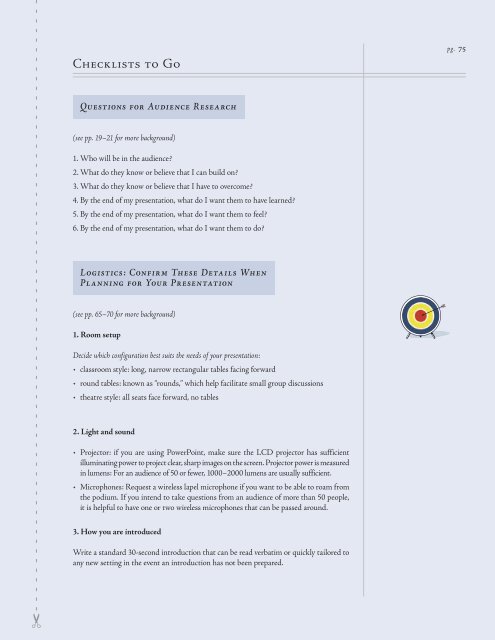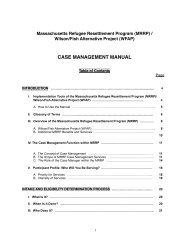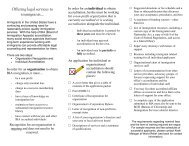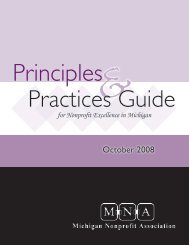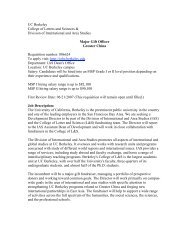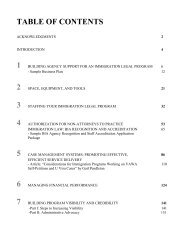Why Bad Presentations Happen to Good Causes - The Goodman ...
Why Bad Presentations Happen to Good Causes - The Goodman ...
Why Bad Presentations Happen to Good Causes - The Goodman ...
Create successful ePaper yourself
Turn your PDF publications into a flip-book with our unique Google optimized e-Paper software.
Checklists <strong>to</strong> Go<br />
Questions for Audience Research<br />
(see pp. 19–21 for more background)<br />
1. Who will be in the audience?<br />
2. What do they know or believe that I can build on?<br />
3. What do they know or believe that I have <strong>to</strong> overcome?<br />
4. By the end of my presentation, what do I want them <strong>to</strong> have learned?<br />
5. By the end of my presentation, what do I want them <strong>to</strong> feel?<br />
6. By the end of my presentation, what do I want them <strong>to</strong> do?<br />
Logistics: Confirm <strong>The</strong>se Details When<br />
Planning for Your Presentation<br />
(see pp. 65–70 for more background)<br />
1. Room setup<br />
Decide which configuration best suits the needs of your presentation:<br />
• classroom style: long, narrow rectangular tables facing forward<br />
• round tables: known as “rounds,” which help facilitate small group discussions<br />
• theatre style: all seats face forward, no tables<br />
2. Light and sound<br />
• Projec<strong>to</strong>r: if you are using PowerPoint, make sure the LCD projec<strong>to</strong>r has sufficient<br />
illuminating power <strong>to</strong> project clear, sharp images on the screen. Projec<strong>to</strong>r power is measured<br />
in lumens: For an audience of 50 or fewer, 1000–2000 lumens are usually sufficient.<br />
• Microphones: Request a wireless lapel microphone if you want <strong>to</strong> be able <strong>to</strong> roam from<br />
the podium. If you intend <strong>to</strong> take questions from an audience of more than 50 people,<br />
it is helpful <strong>to</strong> have one or two wireless microphones that can be passed around.<br />
3. How you are introduced<br />
Write a standard 30-second introduction that can be read verbatim or quickly tailored <strong>to</strong><br />
any new setting in the event an introduction has not been prepared.<br />
pg. 75


